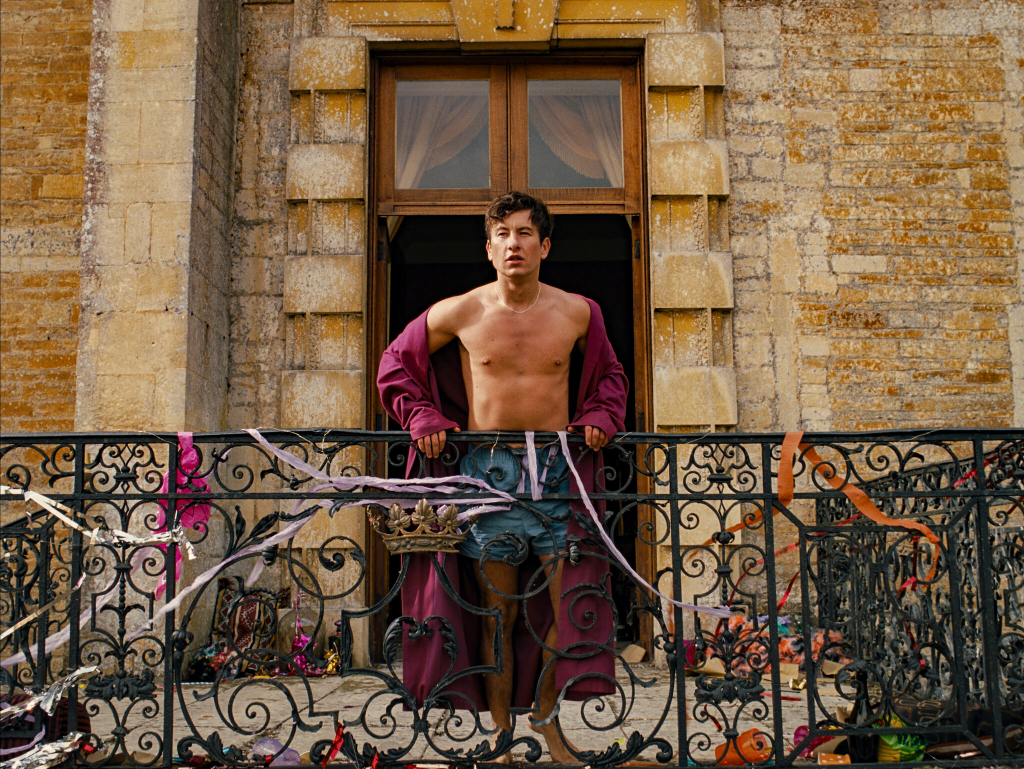On Nov. 17, director Emerald Fennell brought 2000s-inspired thriller “Saltburn” to the big screen, carrying with it major buzz across all forms of media.
Set at both Oxford University and the Saltburn Estate, the story follows young Oliver Quick (Barry Keoghan), who is from the working class, and his peculiar friendship with Felix Catton (Jacob Elordi) who has obvious entitlement with the way he moves through life without a care in the world. As their friendship and trust grows, Oliver slowly integrates into Felix’s world. Eventually, their once seemingly perfect friendship becomes creepy and deceitful with an obvious satirical tone toward the upper class.
“Saltburn” opens at Oxford University, in all its glory, being the center of attention. Right off the bat, the social hierarchies at Oxford and the difference in social classes are portrayed as vicious. The students automatically categorize Oliver as a loser and Felix as the popular, kind, rich guy who takes Oliver under his wing.
The story’s turning point occurs when Felix sympathizes with Oliver due to all his hardships in life and brings him back to his family’s estate for the summer holiday. After being integrated into the life of the extremely wealthy family, Oliver’s character starts to take a turn for the worse with an ending that will leave you astounded for days.
The film truly shines in the sheer style of its filmmaking. With cinematographer Linus Sandgren and production designer Suzie Davies at the helm, they were able to create a world of delirious wealth and visual provocations. “Saltburn” goes after an overall vibe to capture the ineffable feeling that comes from art, and it succeeds. From the overly bright colors and lights to the aesthetic house, food and music, you are seduced by the perfect vibe.
Furthermore, “Saltburn” is filmed in a 4:3 aspect ratio and the filmmakers capture an old-money feeling with the little details of the Saltburn estate. Fennell, knowing this is an atmosphere-forward work, uses a multitude of montages and twists. She creates a lush world that is meant to distract and make you feel first, and think second.
The satirical aspect of the film comments on class struggle and the ultra-wealthy. It focuses on making the wealthy extremely funny with little depth to them. This “eat the rich’’ point gets across in the movie with Oliver slowly taking control of their lives. The film notes that, when it comes to the wealthy, looks are more important than the depth of a person. The filmmakers also utilize this statement with the film itself being so focused on the aesthetic of the film.
Moreover, the acting from Keoghan is impressive and he is committed to the character, and so are many of the other actors. This is to say, Keoghan’s character is the only true character with depth to him — all the other characters are more of good-looking props. This emphasizes the fact that the wealthy in the film have no depth to them, unlike the middle class.
Overall it is the aesthetics, atmosphere and vibe that truly make “Saltburn” the hit that it is. Viewers who prefer the visual aspect of the film with some deeper satirical meaning will be pleased. “Saltburn” is an aesthetic masterpiece that is at times funny and will leave you in shock.



